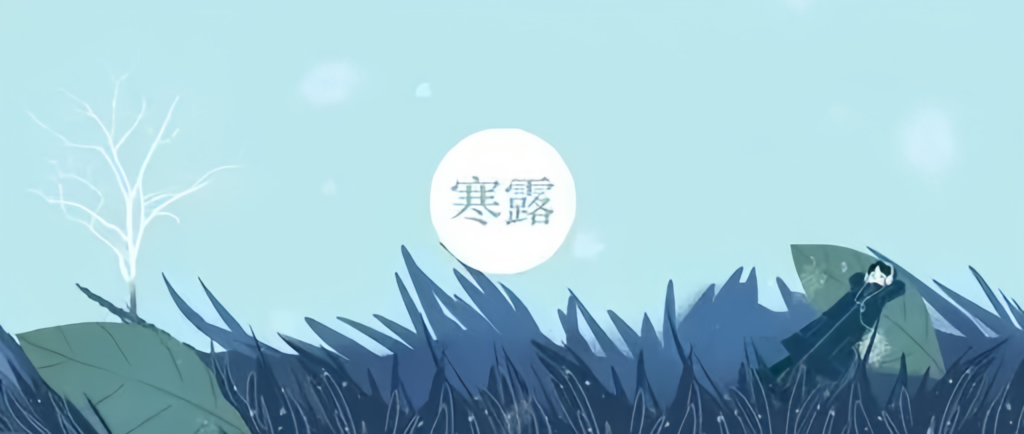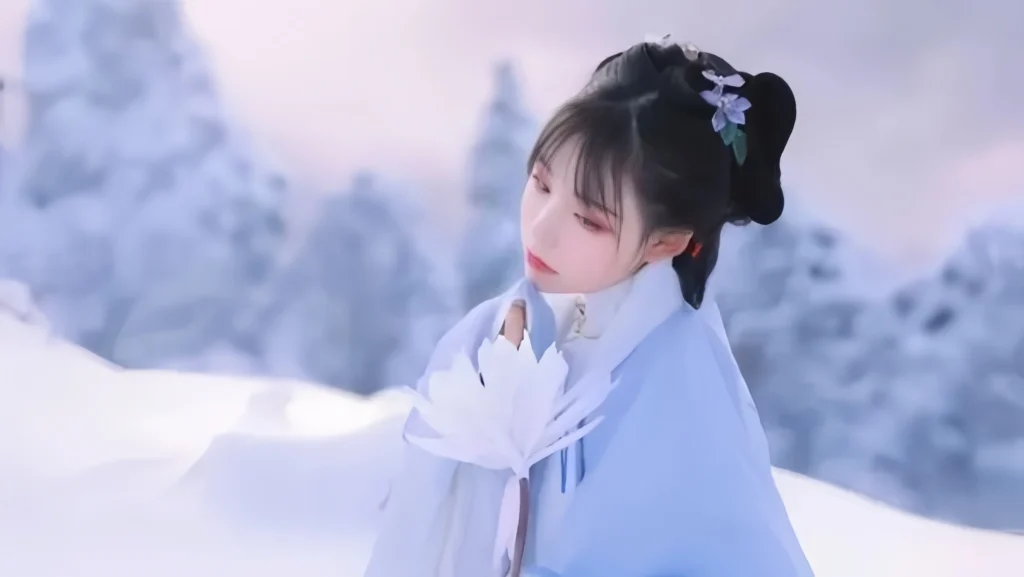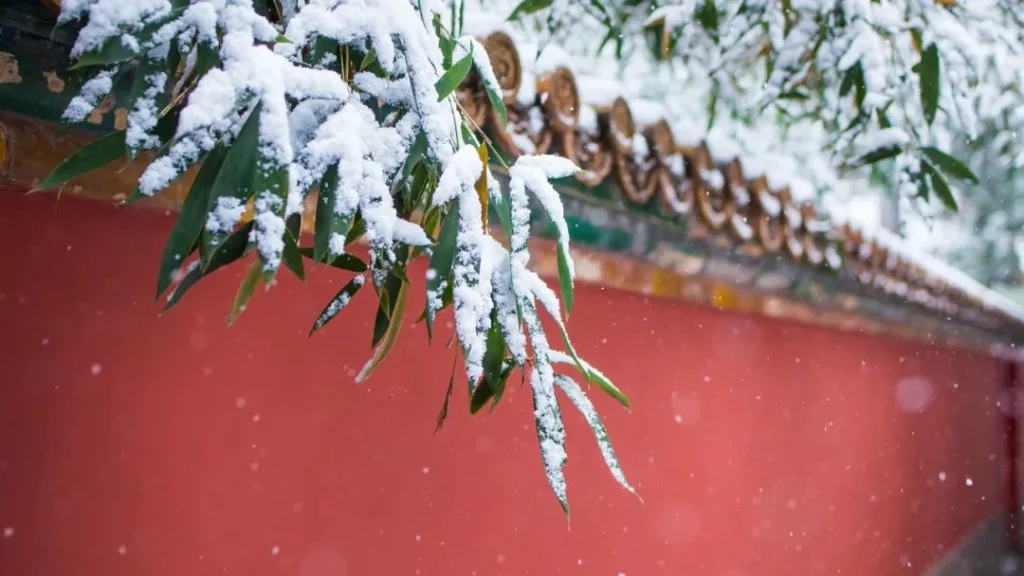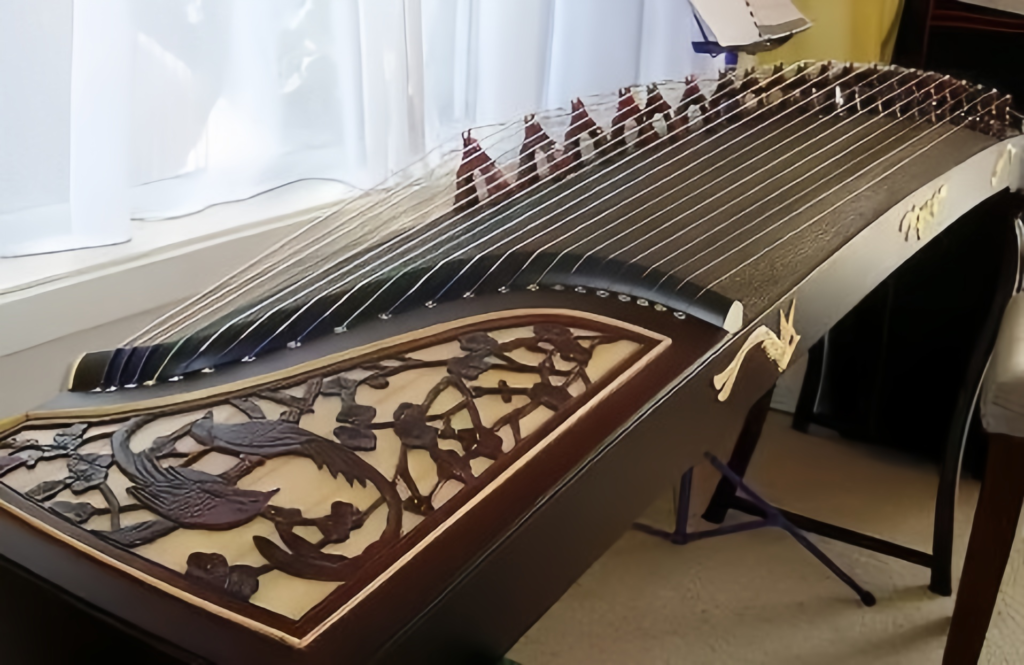Seasonal Hanfu Guide: Top 5 Outfit Ideas for Cold Dew

Cold Dew (Hánlù) is the fifth solar term of autumn and the seventeenth among the twenty-four solar terms. In The Seventy-Two Pentads of the Year (Yuèlìng Qīshí’èr Hòu Jíjiě), it is written:
“In the ninth month, the dew turns cold and is about to freeze.”
A seasonal Hanfu guide becomes essential as Cold Dew passes, marking a deeper shift into autumn. Morning and evening dews grow heavier and colder, almost turning into frost. In the early hours and at night, the ground is often covered with a layer of blue-white frost. As the weather grows colder, late autumn fully arrives. It’s time to adjust your wardrobe to the changing climate—keeping warm without sacrificing elegance.
The Three Phenomena of Cold Dew in Ancient Times
In ancient times, Cold Dew was divided into three stages:
- Wild geese arrive as guests (鸿雁来宾) – As the seasons change, wild geese migrating south form V-shaped or straight-line formations in the sky.
- Sparrows dive into the sea, transforming into clams (雀入大水为蛤) – Small birds and sparrows seem to disappear, while the clams along the seashore resemble the shape of these birds.
- Chrysanthemums bloom (菊有黄华) – Unlike most plants that bloom under the influence of yang energy, chrysanthemums bloom due to yin energy. Their golden hues align with the season when earth energy is at its peak, making autumn a prime time for these flowers to flourish.
This season is ideal for gathering with friends, enjoying the crisp autumn air, hiking up scenic mountains, appreciating blooming chrysanthemums, practicing calligraphy, and savoring tea—a lifestyle filled with poetry and elegance.

This guide is part of our ongoing seasonal Hanfu guide, offering timely tips on how to stay stylish and warm during traditional solar terms.
Dressing for Cold Dew: Keeping Warm in Hanfu
As the saying goes, “Autumn chill has its rules.” While some embrace the cooling temperatures, neglecting warmth can harm the body. Key areas that need extra warmth include the feet, shoulders, navel, and lower back. For those who love traditional attire, a seasonal Hanfu guide can be especially helpful in navigating these cooler days with both grace and comfort.
To build a versatile Hanfu wardrobe that works for solar terms like Cold Dew, start with our beginner’s hanfu guide, which covers essential styles that can be layered for warmth and historical authenticity.
❌ Avoid: Open-Front Hanfu with Corsets
✔ Opt for High-Collar Styles or Pair with a Scarf
The neck has many blood vessels, and exposure to cold air can reduce blood flow to the brain, increasing the risk of colds, especially for those with respiratory issues. Office workers who frequently strain their shoulders and necks are more prone to stiffness and pain. If you prefer wearing an open-front Hanfu with a corset, consider adding a scarf for extra warmth—a common tip found in any thoughtful seasonal Hanfu guide

❌ Avoid: Medium-Length Skirts or Short Mamian Skirts Alone
✔ Wear Long Socks or Thermal Leggings
“Illness enters through cold, and cold starts from the feet.” Even if you want to build cold resistance, keeping your feet warm is essential, especially for women. Cold feet can lead to poor circulation in the lower abdomen, menstrual irregularities, or even severe menstrual pain. Following a seasonal Hanfu guide, wearing thermal leggings or long socks with shorter skirts ensures style doesn’t come at the expense of health.

❌ Avoid: Wearing Only a Single Layer
✔ Consider Adding a Short Cloa
Cold shoulders can hinder blood circulation in the arms, leading to stiffness, soreness, and even dizziness. Long-term exposure can contribute to neck and shoulder pain or even respiratory issues. A short cloak, as recommended in many seasonal Hanfu guides, can help seal in warmth while adding a touch of layered elegance.
For Those Sensitive to Cold
✔ Hand Warmers or Traditional Hot Water Bottles
In ancient times, hand warmers evolved from small braziers. People placed hot charcoal in copper hand warmers to gather around for warmth and conversation. Another option was the tangpozi (汤婆子), a metal hot water bottle similar to modern electric heating pads. Today, portable rechargeable hand warmers are a convenient alternative to staying warm in chilly weather.

Autumn Deepens, But the Heart Remains Warm
As autumn settles in, the landscape shifts—dry grass hides beneath golden hues, and fallen leaves whisper stories of time’s passage. A gentle wind stirs, carrying poetic sentiments like flowing water.
Pick up a fallen leaf, press it between the pages of a book, and let your wishes settle with time, untouched by dust, unchanged in heart. Just as we savor these fleeting moments, a thoughtful seasonal Hanfu guide can help us dress in harmony with the season, embracing both beauty and warmth.
For more general fall inspiration beyond Cold Dew, explore our broader autumn fashion guide with outfit ideas for various temperatures, helping you extend your seasonal Hanfu repertoire.

Send warm greetings through the morning mist and drifting dew, reaching out to those you care for. Time moves swiftly—another autumn has arrived. May the past bring no sorrow, and the future hold no regrets.
“The sky collects the remnants of summer, while the rustling of leaves sings the melody of autumn.”
The sound of autumn is in the murmurs of falling leaves, the dewdrops rolling off their golden edges, the calls of migrating geese, and the long-awaited words of reunion between friends.
In the early mornings of Cold Dew, mist lingers—cool and dreamy—until the sun rises high, revealing an expanse of golden autumn. Wild geese fly south, chrysanthemums bloom in yellow clusters, and the air carries the fragrance of ripening persimmons and fresh crab.
“In the courtyard, trees cast white shadows, and the roosting crows remain still. The silent dew moistens the fragrant osmanthus.”
Cold Dew arrives not with sharpness, but with gentleness—a soft, poetic reminder that autumn is here, and the days grow colder.
So as the dew thickens and the wind cools, take care. Stay warm, stay beautiful, and enjoy the season. And remember—our seasonal Hanfu guide will be here to help you navigate each change in weather with warmth, style, and tradition.





Responses